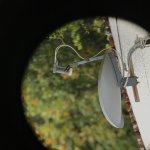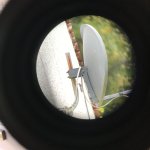Well, when it comes to sharpness, a newtonian on axis is extremely hard to beat, but how do you deal with off-axis aberations? Coma is inevitable - the solution is a coma corrector, but the only one that actually works perfectly for visual observations is paracorr from televue, which is quite bulky. At the end of the day, the whole setup, especially if upright image is required, is gonna be just that - bulky.
I have been for many years using Maksutov scopes for birding - those are less bulky, but they suffer from inevitable parasitic light during the day - there is geometrically no solution, any baffle system either leaves some stray light or cuts some desired light. However, these things are silly cheap and compared to the performance of refractors at the same price bracket, they work wonders.
Then I got older and richer and bought an actual quality spotter (Meopta S2 HD) and it pains me to say, but I am never coming back. Not only is the image fantastic, but the whole thing is just so small and lightweight and that completely changed how much I actually pull it out to use it. That's simply unachievable with a mirror system, no matter what.
Newtonians still remain my favored system for astronomy. I have my half meter Dobsonian and you won't get anywhere close to a one-man mobile scope of that aperture with anything else.







